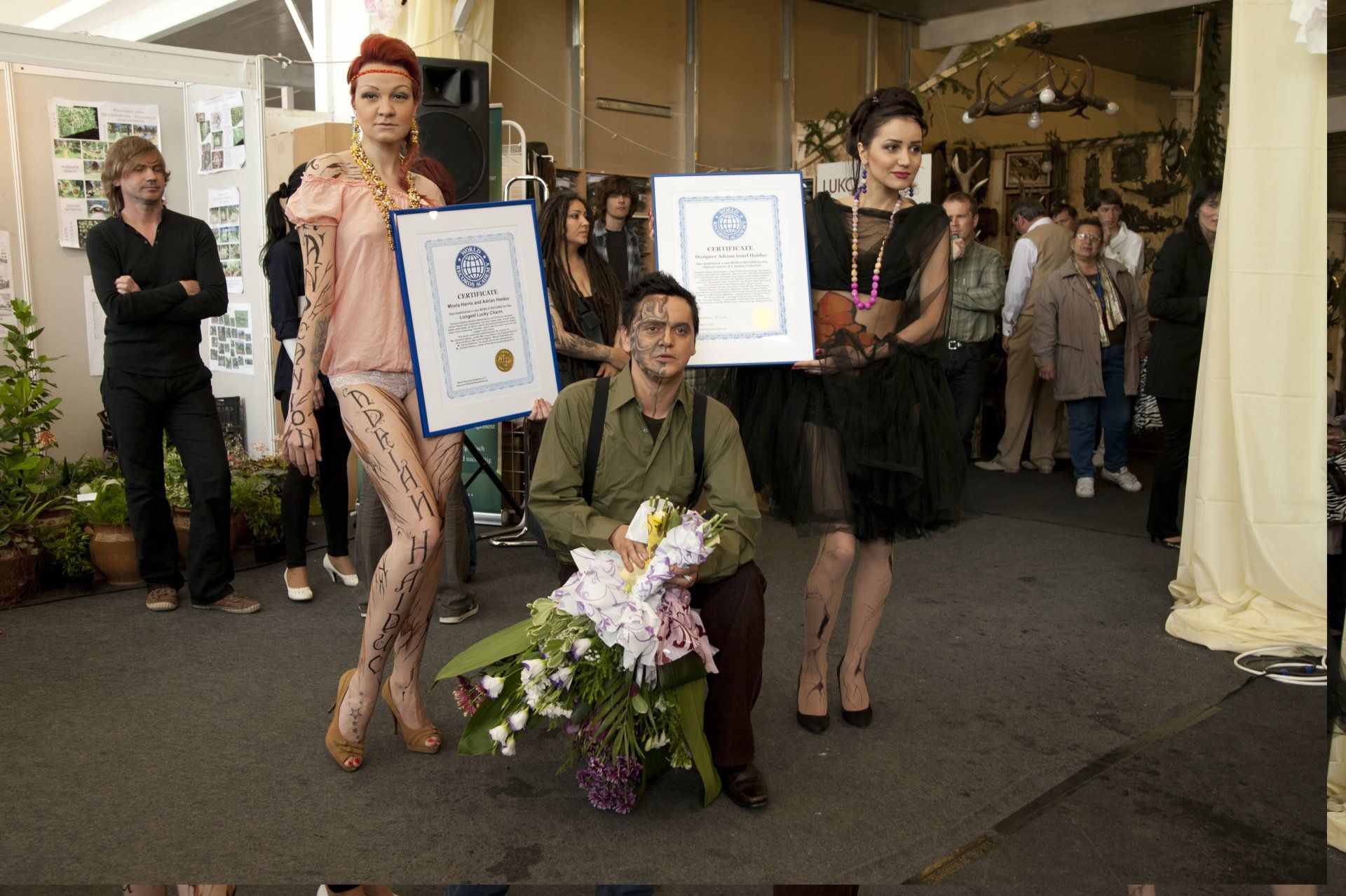World’s First Nylon Plant, world record in Seaford, Delaware
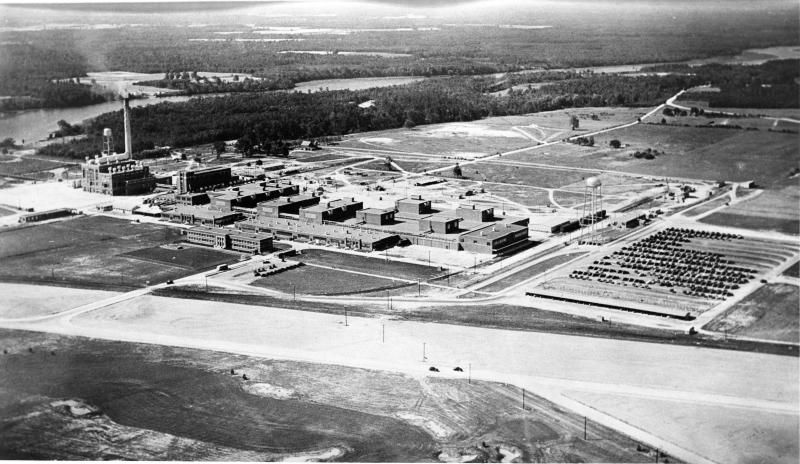
Seaford, Delaware, United States--The city of Seaford, in western Sussex County, is known as the “Nylon Capital of the World,” because this is where one of the world’s most famous fibers was first produced on a large scale; DuPont's siting of their nylon factory downstate in Seaford was regarded as a boon to Delaware; the Moderne plant came online with 850 workers in December 1939, setting the world record for being the World’s First Nylon Plant, according to the WORLD RECORD ACADEMY.

"This booklet commemorates the designation of the DuPont Nylon Plant in Seaford, Delaware, as a National Historic Chemical Landmark. The designation was conferred by the American Chemical Society ( A C S ) , a non-profit scientific and educational organization of 150,000 chemists and chemical engineers. A plaque marking the A C S designation was presented to the plant on October 26, 1995," the American Chemical Society says.
"The inscription reads: " At this site on December 15, 1939, DuPont began commercial production of nylon. Among the earliest successes of a fundamental research program novel in the American chemical industry, nylon was the first totally synthetic fiber to be fashioned into consumer products. Prepared wholly with materials readily derived from coal, air, and water, nylon has properties superior to its natural counterparts, such as silk. Nylon revolutionized the textile industry and led the way for a variety of synthetic materials that have had enormous social and economic impact on the fabric of everyday life worldwide."
"DuPont developed nylon in record time, five years between the creation of the molecule in the laboratory and plant start-up.The process was technically complex, involving new raw materials, new fiber-forming techniques and unfamiliar materials of construction. Plant construction took one year and cost $8 million. The plant at Seaford initially employed 850 people and had a capacity of 4 million pounds a year; DuPont announced an expansion before the first pound was produced. T h e Seaford plant is still operating today, employs 1,600 people, and has a capacity of 400 million pounds—100 times greater than in 1939."
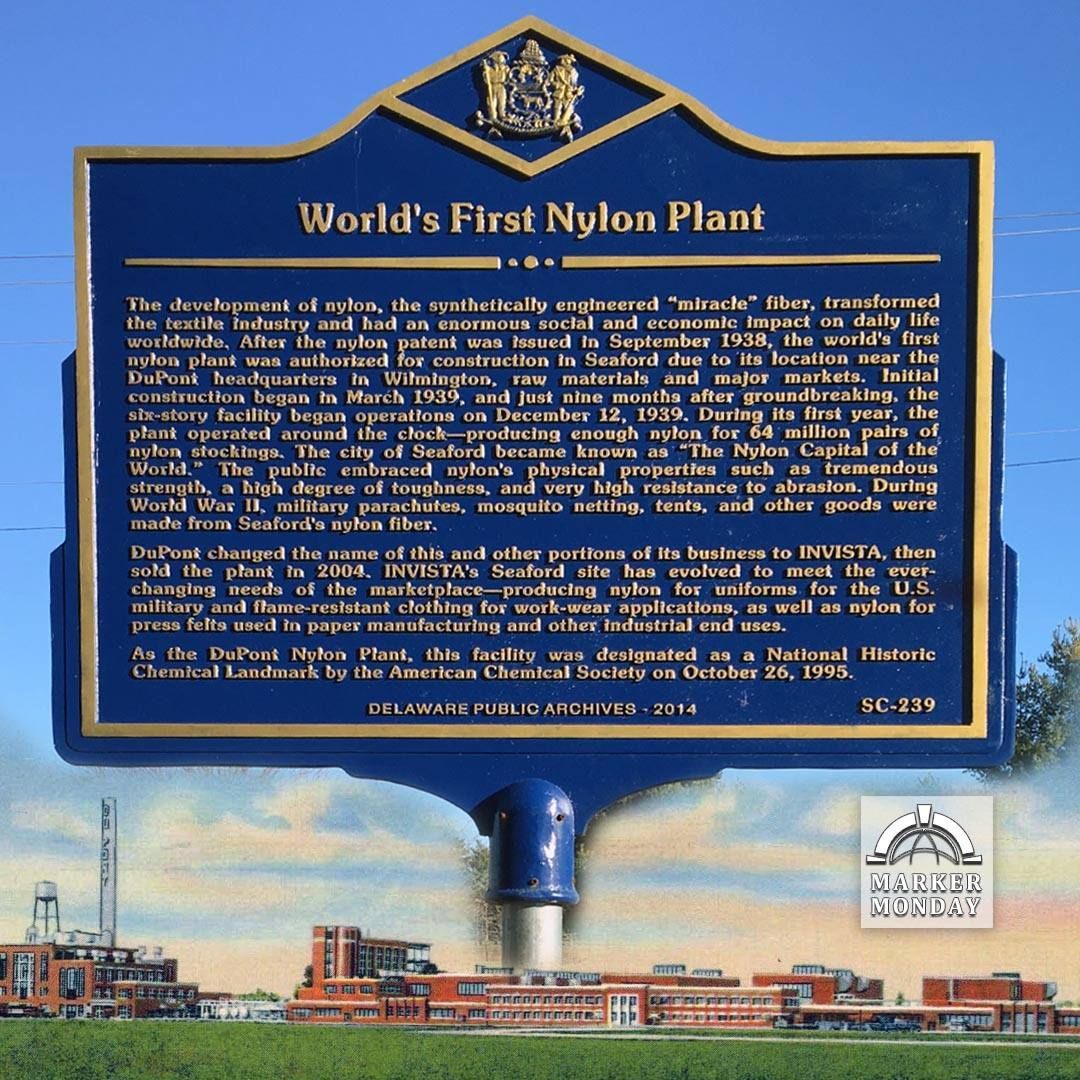
"The development of nylon, the synthetically engineered “miracle” fiber, transformed the textile industry and had an enormous social impact on daily life worldwide. After the nylon patent was issued in September 1938, the world’s first nylon plant was authorized for construction in Seaford due to its location near the DuPont headquarters in Wilmington, raw materials and major markets," the Delaware Public Archives says.
"Initial construction began in March 1939, and just nine months after groundbreaking, the six-story facility began operations on December 12, 1939. During its first year, the plant operated around the clock–producing enough nylon for 64 million pairs of nylon stockings. The city of Seaford became known as “The Nylon Capital of the World.” The public embraced nylon’s physical properties such as tremendous strength, a high degree of toughness, and very high resistance to abrasion.
"During World War II, military parachutes, mosquito netting, tents, and other goods were made from Seaford’s nylon fiber. DuPont changed the name of this and other portions of its business to INVISTA, then sold the plant in 2004. INVISTA’s Seaford site has evolved to meet the ever-changing needs of the marketplace–producing nylon for uniforms for the U.S. military and flame-resistant clothing for work-wear applications, as well as nylon for press felts used in paper manufacturing and other industrial end uses. As the DuPont Nylon Plant, this facility was designated as a National Historic Chemical Landmark by the American Chemical Society on October 26, 1995."
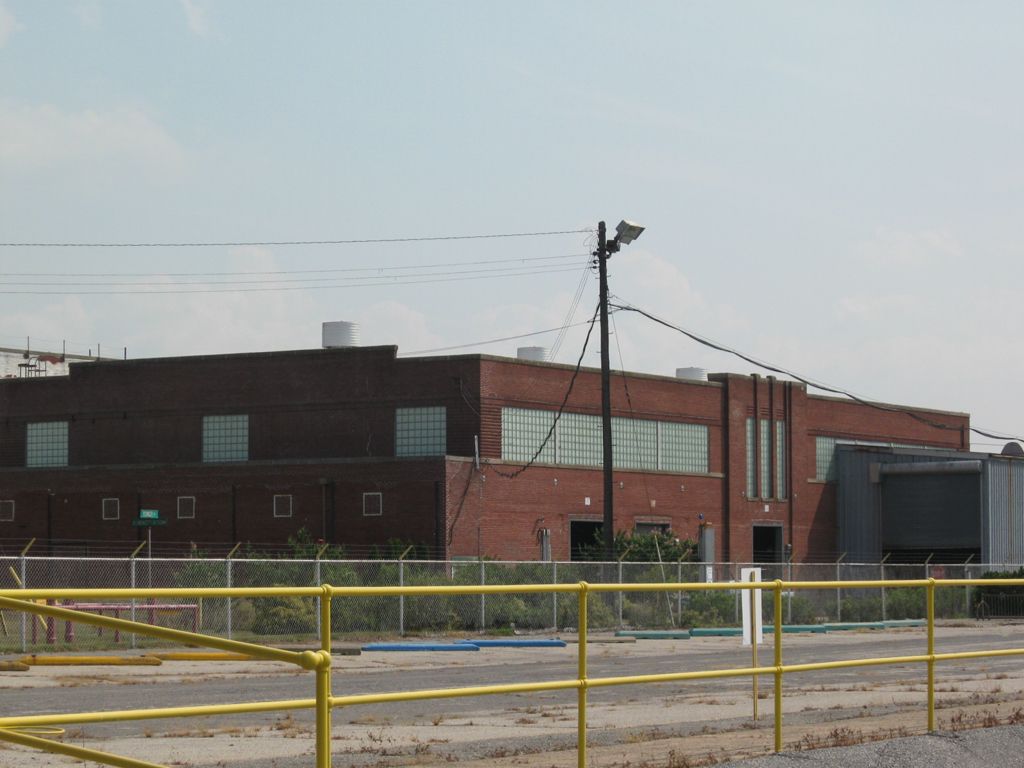
"Nylon, a replacement for silk, was a best seller from the outset. Prior to the start-up of the Seaford plant, DuPont had put 4,000 pairs of stockings on sale in Wilmington. They sold out in three hours," the American Chemical Society says.
"Seven months later, the company put 4,000,000 pairs on sale nationally. These sold out in four days. The name "nylon," intended to be a generic designation of a class of polymers, became another word for stockings.
"Since then the strong, elastic, resilient fibers have found use in hoses and hosiery, tire cord and lingerie, carpets, curtains, seat belts, fishing line and dental floss, and a wide variety of apparel and other products. So give a nod of thanks to chemist Wallace Carothers and the other men and women of the time and of Delaware who brought us this versatile fiber nylon that we have come to depend upon for so many everyday uses. Where would we be without it? Where would we be without chemistry?"
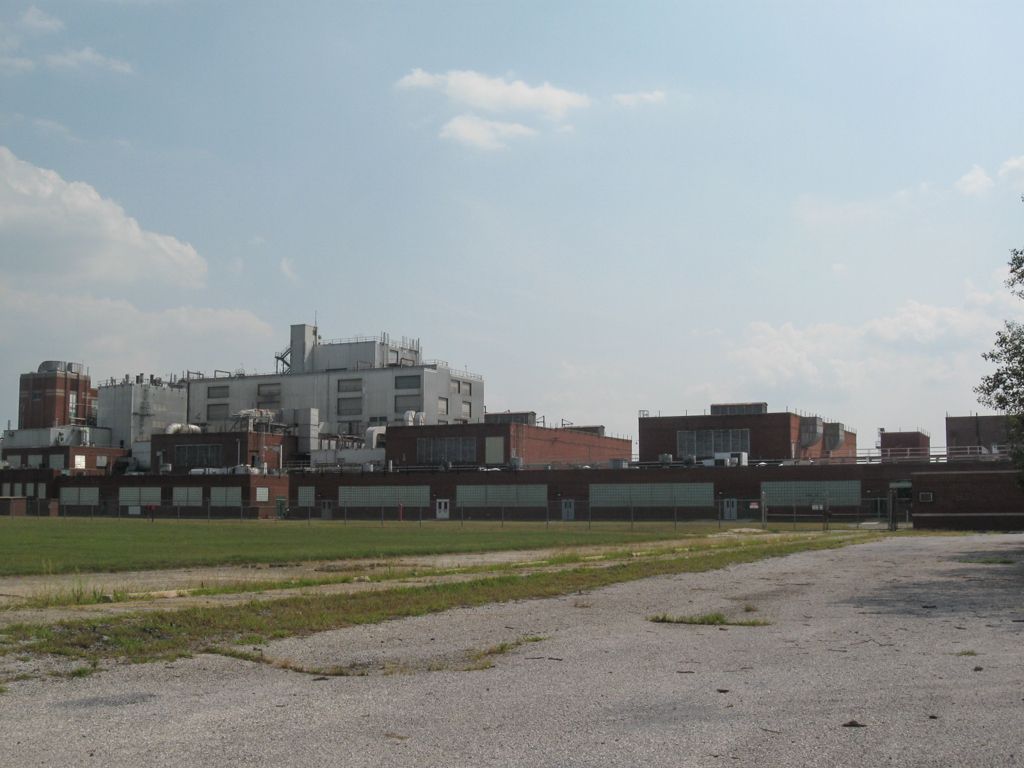
"In the early decades of the 20th century, the Du Pont Company was America’s premier manufacturer of explosives; but after World War I the company began to diversify; and the company hired a team of chemists, who turned out a steady stream of scientific papers and patents including the first practical synthetic fiber," the
Delmarva Now says.
"Several names for the new fiber that included “Du Pont” were considered and rejected. “Durasheen” and “Delawear” were given brief consideration. Because the first use of the fiber was to be hosiery, “nuron” (no run spelled backwards) was suggested; and it eventually morphed into the invented word “nylon.”
"Using fiber manufactured in a small pilot plant, the first nylon stockings went on sale on Tuesday, Oct. 24, 1939, in six Wilmington stores. According to the Wilmington Sunday Morning Star, the sale was “greeted by a rush of buyers,” and ““The DuPont Company must have highly gratified by the way Wilmington women flocked to the stores on Tuesday to take advantage of the opportunity to buy nylon stockings."
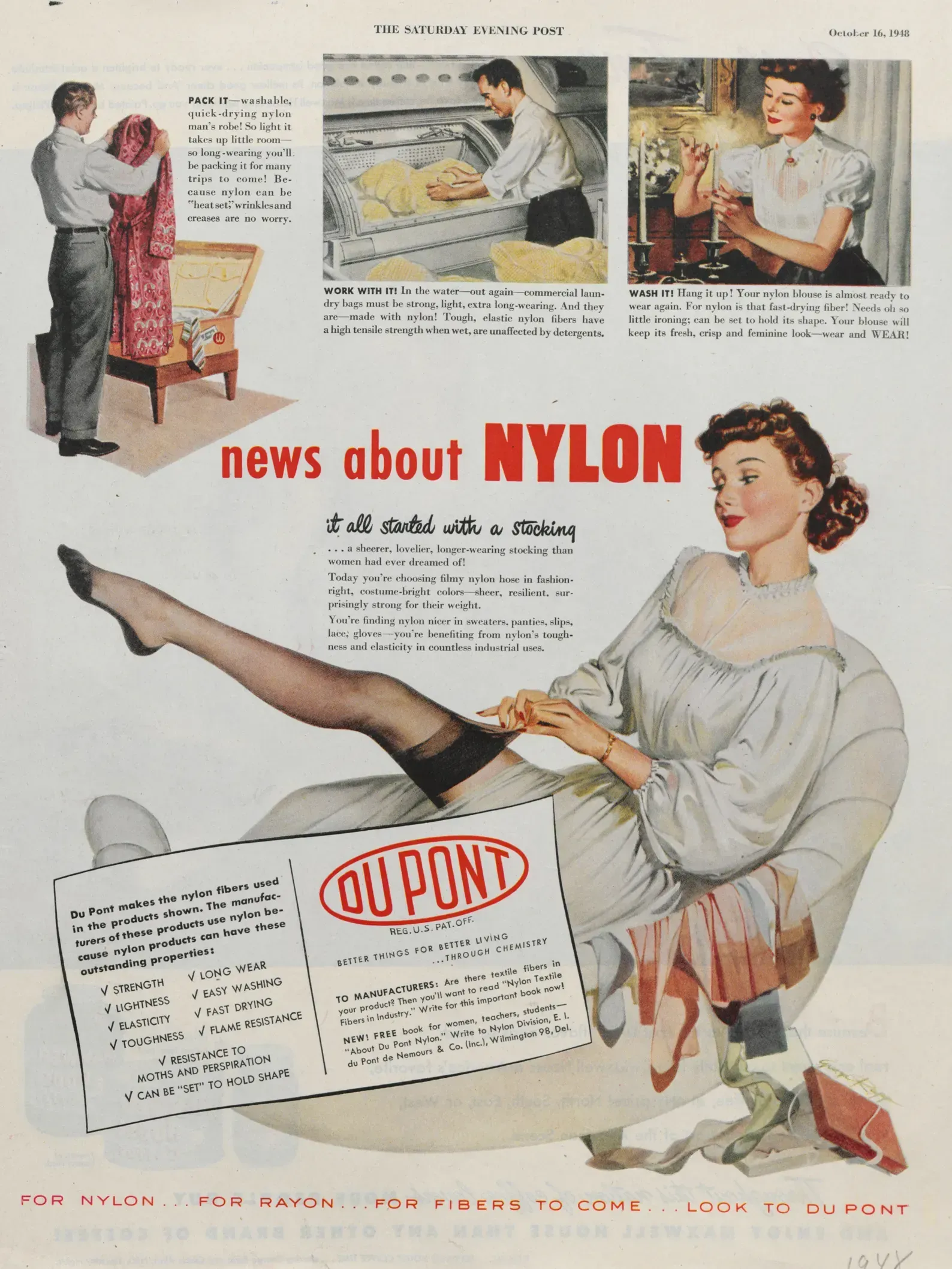
"Built during the Great Depression, the once sprawling 35-acre facility was the first nylon plant in the world. The success of the DuPont fiber created thousands of jobs, which in turn powered Seaford's economy. The town soon adopted the moniker, "The Nylon Capital of the World." Seaford's first shopping center – now marked by vacancies – also adopted the nylon name, while a road leading to the plant was christened Nylon Boulevard," the Delaware Online says.
"The success of the DuPont fiber created thousands of jobs, which in turn powered Seaford's economy. The town soon adopted the moniker, "The Nylon Capital of the World." Seaford's first shopping center – now marked by vacancies – also adopted the nylon name, while a road leading to the plant was christened Nylon Boulevard.
""DuPont was really booming back then," said former Seaford mayor Guy Longo, who arrived in town to work at the plant in 1965. "There were about 4,700 factory employees and, at that time, DuPont had its own construction division with about 1,200 workers getting a DuPont paycheck."
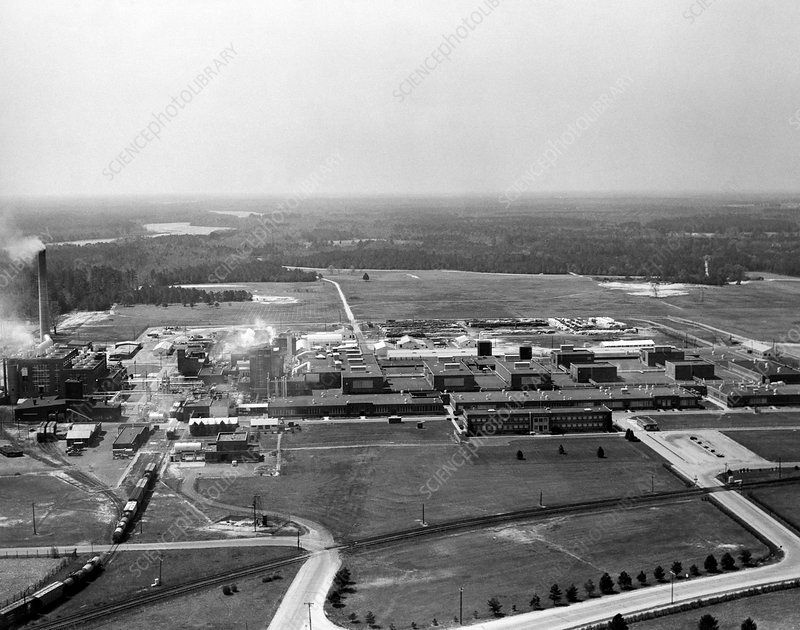
"The city of Seaford, in western Sussex County, is known as the “Nylon Capital of the World,” because this is where one of the world’s most famous fibers was first produced on a large scale," the Cape Gazette says.
"Invented in 1937 by DuPont chemist Wallace Hume Carothers, nylon was first introduced to the public at the 1939 World’s Fair in New York. After women were shown the so-called “miracle fabric,” sales of stockings began skyrocketing and DuPont knew they needed to expand in order to address the demand.
"The company considered 14 locations for their first nylon plant with the following criteria in mind: it must have a good water supply, good transportation potential and a good work force. DuPont finally chose 609 acres on the Nanticoke River in west Seaford, a decision that was celebrated by local leaders with an impromptu parade through the heart of town. DuPont records of that day detail the presence of marching bands, fireworks and grown men crying in the streets because of all the jobs the company was bringing to the rural town."

"A pilot plant at the DuPont Experimental Station ( BR25) produced the first run of an extraordinary new substance, “Fiber 66,” in 1938. Various names were considered for the textile polymer, including “Delawear,” before “nylon” was chosen," the SAH Archipedia says.
"It was advertised to the public at the World's Fair of 1939 in New York City: “strong as steel, as fine as a spider's web.” DuPont's siting of their nylon factory downstate in Seaford was regarded as a boon to Delaware. The Moderne plant came online with 850 workers in December 1939, which was about the time Japanese silk supplies were cut off by World War II. The product, of course, proved a sensation among consumers nationwide
"Employment here peaked at 4,600 in the 1970s, but subsequently shrank to just 650 by 2004, the year DuPont sold the historic facility, part of which had previously been demolished. In its original form, the plant's buildings showed a complex rectilinear interplay between horizontals and verticals, at the time an architectural approach as innovative as the technology housed within."

"INVISTA’s Seaford site manufactures nylon fiber for uniforms for the U.S. military, flame-resistant clothing for work-wear applications, nylon fiber for press felts used in paper manufacturing, and other industrial end-use products," the INVISTA says.
"In addition, the site also makes nylon fiber for CORDURA® brand fabric outdoor and lifestyle clothing, including CORDURA® Baselayer, Denim and CORDURA® Canvas fabric technologies.
"The plant is located on approximately 648 acres adjacent to the Nanticoke River. In addition, INVISTA has designated 80 acres as wildlife habitat and has donated 146 acres to the Nanticoke River Watershed Conservancy for conservation purposes."
"The Seaford plant produced 4 million pounds of nylon in its first year of operation. That number soon grew to an astounding 270 million pounds annually as demand skyrocketed for stockings and other nylon products. At its peak in the 1970s, the nylon plant employed more than 4,500 people, a number nearly equal to the town’s population at that time," the Secrets of the Eastern Shore says.
"Seaford adopted a new slogan: “The Nylon Capital of the World.”
"Those glory days are distant memories now, as you’ll see when you find your way down Nylon Boulevard to check out the old plant. You’ll pass a lush golf course that dates to the nylon boom times, but the boulevard ends in a different sort of scene, with overgrown shrubs obscuring your view of the decaying hulk of a factory as it rises up behind a fence topped with rusting barbed wire. Operating as Invista, the plant was still open and producing nylon as of this writing—but barely, with a workforce of less than 100."
Photos: World’s First Nylon Plant, world record in Seaford, Delaware
(1) Cape Gazette
(2) DuPont Seaford Plant as seen from the air. March, 1970. Photo: Reddit/Delaware History
(3) Facebook/Delaware Public Archives
(4-5) SAH Archipedia
(6) Courtesy of Hagley Museum & Library
(7) HAGLEY MUSEUM AND ARCHIVE / SCIENCE PHOTO LIBRARY
(9) Wikipedia/Office for Emergency Management. Office of War Information
(10)
|
Alabama world records |
Alaska world records |
Arizona world records |
Arkansas world records |
California world records |
|
Colorado world records |
Connecticut world records |
Delaware world records |
Florida world records|
|Georgia world records | Hawaii world records| Idaho world records| Illinois world records| Indiana world records|
|Iowa world records | Kansas world records| Kentucky world records| Louisiana world records| Maine world records|
| Maryland world records| Massachusetts world records | Michigan world records | Minnesota world records |
| Mississippi world records | Missouri world records | Montana world records | Nebraska world records |
| Nevada world records | New Hampshire world records | New Jersey world records | New Mexico world records |
| New York world records | North Carolina world records | North Dakota world records | Ohio world records |
| Oklahoma world records | Oregon world records | Pennsylvania world records | Rhode Island world records |
| South Carolina world records | South Dakota world records | Tennessee world records | Texas world records |
| Utah world records | Vermont world records | Virginia world records | Washington world records |
| West Virginia world records | Wisconsin world records | Wyoming world records|
| Agriculture world records| Amazing careers world records | Arts world records |
| AMUSEMENT & THEME PARK WORLD RECORDS |
| Biggest world records | Business world records | Books world records | |
| Christmas world records | Collections world records | CATS world records | DOGS world records |
|Drinks world records | | Easter world records | Entertainment world records | FASHION world records |
|
Farming world records |
Fishing world records |
Food world records |
|
Games world records |
Green world records |
Halloween world records |
Hobbies world records|KIDS world records |
| Human Body world records | Internet world records | INVICTUS world records | JUSTICE world records |
| Mass Participation world record | Medical world records |
| Military world records | MEDICAL world records | MUSEUM world records | Modern Society world records |
|
Most Successful world records | Nature world records | New Year world records |
PET world records |
|
Religious world records | Science world records |
Skydiving world records
| Smallest world records | Sport world records | Stunts world records | Strength world records |
| Technology world records | Thanksgiving world records | Travel world records | Transport world records |
| Valentine's Day world records | Youngest world records |
| Weather world records | Wedding world records | WORLD'S FIRST world records |

